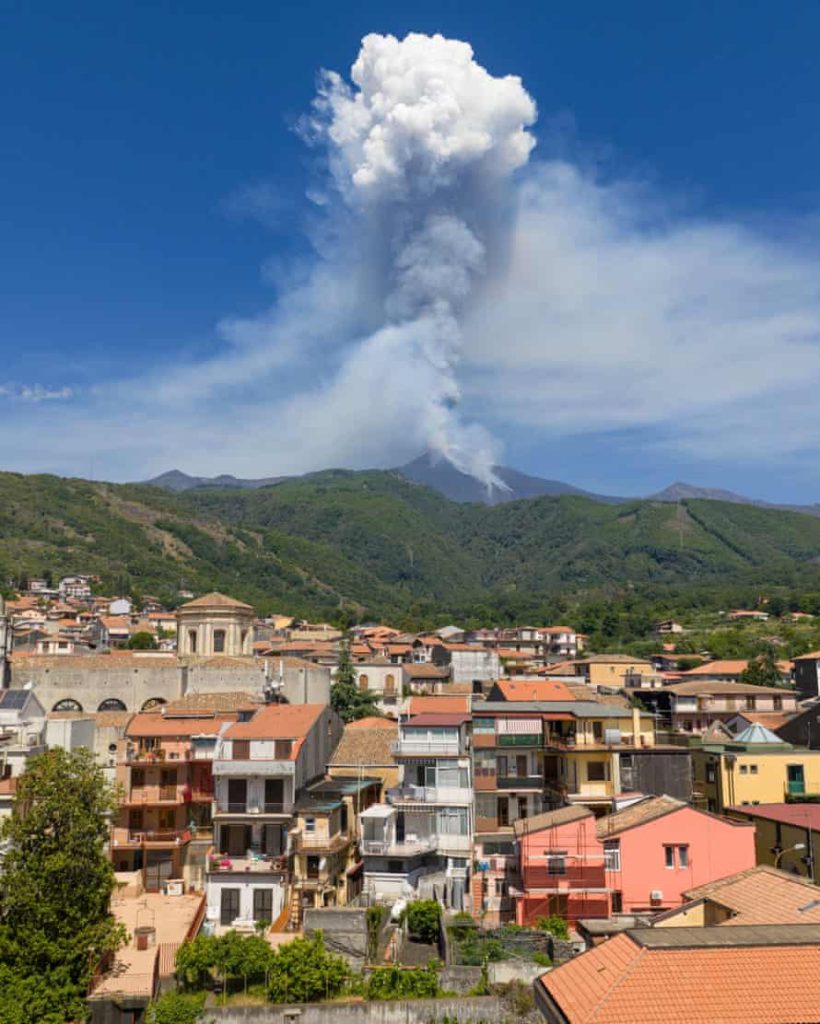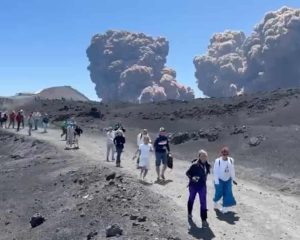Mount Etna, Europe’s largest and most active volcano, erupted on Monday morning, releasing a vast plume of ash, gas, and volcanic rock into the skies over Sicily. The dramatic event, which began at approximately 11:24 a.m. local time, was captured on surveillance cameras and closely monitored by Italy’s National Institute of Geophysics and Volcanology (INGV).
The eruption produced a pyroclastic flow, a fast-moving and highly dangerous surge of hot gases, ash, and volcanic debris, which INGV attributed to a likely collapse of material along the northern flank of the volcano’s southeast crater. This explosive activity later transitioned into a lava fountain, with the ash cloud drifting in a south-westerly direction.
Despite the scale of the eruption, authorities have confirmed that there is no immediate danger to the population.
Regional Authorities Monitoring Closely
Renato Schifani, President of the Sicilian Region, stated that volcanology experts have reassured the government that the situation remains under control. “There is no danger for the population,” Schifani said. “The pyroclastic flow did not extend beyond the Valley of the Lions, a popular tourist area on the volcano’s slope.”
However, officials continue to monitor the eruption closely. Schifani described the partial collapse of the southeast crater, which produced a towering column of volcanic material, as a phenomenon being observed “with the utmost caution.”
In light of the activity, the head of the regional civil protection unit, Salvo Cocina, advised tourists to temporarily avoid the area. “Given the potential evolution of the event, we strongly recommend that visitors refrain from entering the vicinity of the volcano,” he said.
Aviation Alert Issued
The eruption triggered a red aviation alert, with the volcanic ash plume reported to have reached an altitude of 6.5 kilometres (approximately 4 miles). Despite this, Catania Airport remained fully operational as of the latest reports.
Footage circulated on social media appeared to show tourists descending the volcano during the eruption, with some stopping to take photographs. However, these clips have not been independently verified.
Mount Etna, situated on the eastern coast of Sicily, is one of the most closely studied volcanoes in the world. Its frequent activity continues to attract both scientific interest and tourist attention. While eruptions are not uncommon, the magnitude of Monday’s ash column marks a notable event in the volcano’s recent activity.
Authorities remain vigilant and have confirmed that the situation is under continuous evaluation. No injuries or damages have been reported at this time.




